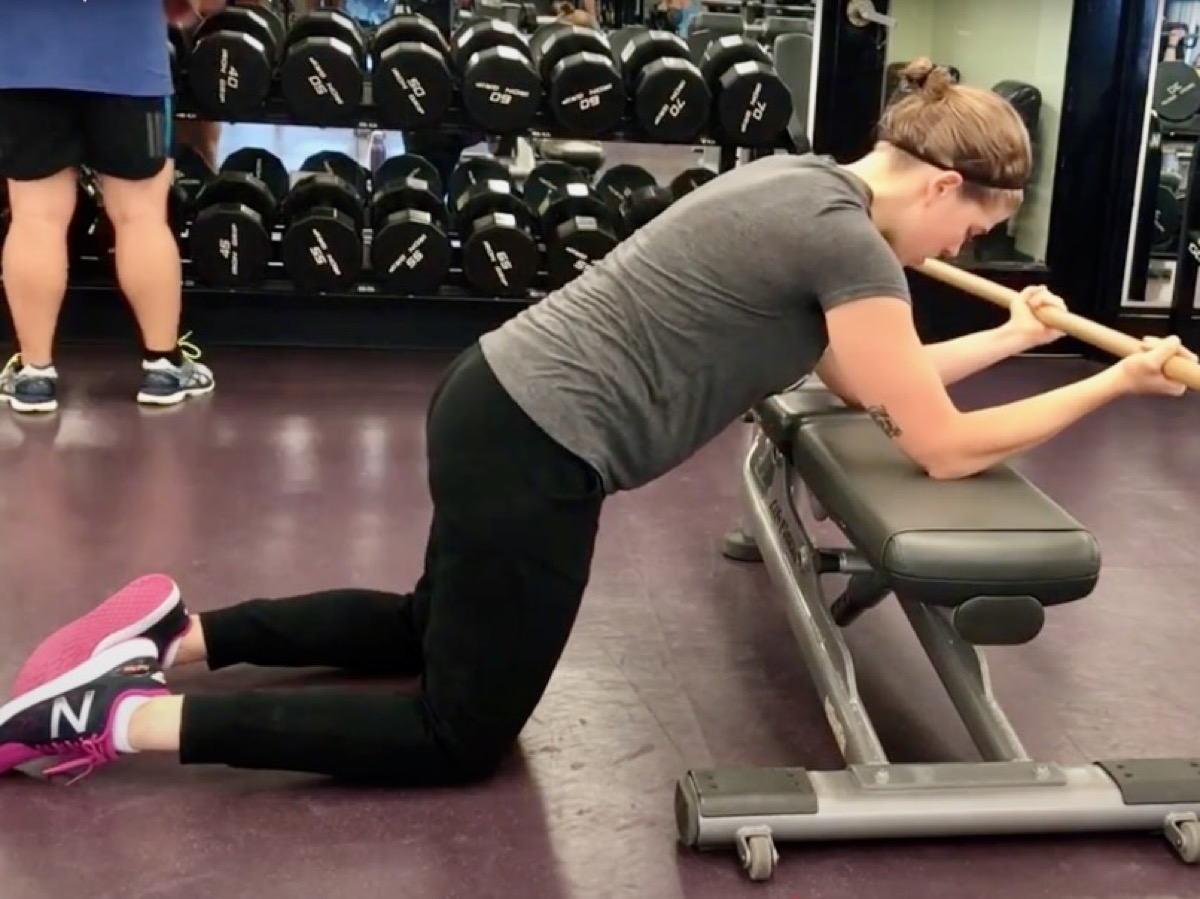This One Stretch Could Instantly Improve Your Overhead Press Form

If you’re looking to build boulder shoulders and ripped triceps, you’re likely quite familiar with the overhead press. This productive exercise improves upper-body power and strength. But regardless of how many reps you complete, there’s always room for improvement. If you’re not focused on form, you likely won’t see your desired results. We learned one simple stretch that can be a true game-changer in your overhead press form.
The One Stretch To Improve Your Overhead Press Form
The secret stretch we’re referring to is called the lat and thoracic spine opener. It’s performed with a box or bench. You’ll also need a towel or stick.
“It’s incredibly effective for improving shoulder flexion and thoracic extension simultaneously, which are both critical for a strong, pain-free overhead press,” explains Leon Veal, level three certified personal trainer and head of nutrition and innovation at Styrkr.
How To Do It
If you’re ready to boost your overhead press form, let’s dive in.
- Grab a stick/bar, holding it with your hands shoulder-distance apart.
- Kneel in front of a sturdy box or bench with your elbows on the edge, holding the stick or towel vertically.
- Press your hips back to your heels and lower your chest toward the ground, allowing the stick/bar to come overhead.
- Keep your elbows fixed and “push the chest through your arms” to promote a solid thoracic extension.
- Hold the bottom position for 30 to 60 seconds and repeat 3 to 4 times.
To improve your form, complete this stretch a minimum of 4 to 5 times a week, especially on press days. Just doing 2 to 3 rounds of 30 to 60 seconds each can boost overhead mobility in just two weeks.
“It’s not just about stretching, it’s about consistent, mindful practice,” Leon tells us.
Common Mobility Restrictions That Impact Your Overhead Press
“The most common mobility restrictions I see are in the lats, thoracic spine, and glenohumeral joint (shoulder),” Leon tells us. “These areas are often tight from sitting, poor posture, or repetitive pressing with limited overhead range. If you can’t get full shoulder extension without having to use the lower back, you’re not just limiting strength, you’re increasing the chances of injury.”